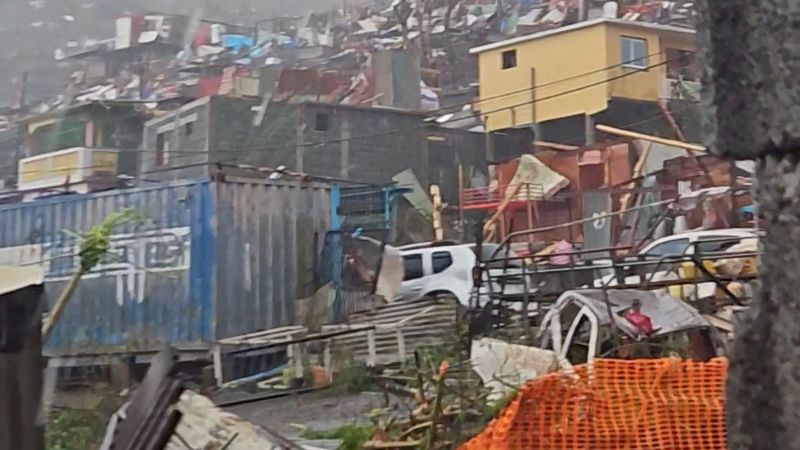Cyclone Chido caused extensive damage on the French territory of Mayotte in the Indian Ocean, leaving several people dead, officials said Saturday, as the storm roared toward the east coast of Africa.
French Interior Minister Bruno Retailleau said a “very provisional” tally shows there are at least “a few people” who have died. He said he would not yet provide any precise numbers of people killed and injured given rescuers have not yet been able to assess the situation on the ground.
“We’re afraid the toll will be high, but for the moment I can’t give any figures,” Retailleau told reporters following an emergency meeting at the interior ministry in Paris. “The island seems devastated.”
Chido brought winds in excess of 220 kph (136 mph), according to the French weather service, ripping metal roofs off houses in Mayotte, which has a population of just over 300,000 spread over two main islands that lie about 800 kilometers (497 miles) off Mozambique.
France’s new Prime Minister François Bayrou, who was appointed Friday, said public facilities have been “severely damaged or destroyed” including at the prefecture, the hospital and the airport. He said many people living in precarious shacks in slum areas have faced “very serious risks.”
French President Emmanuel Macron said he was closely monitoring the situation.
“Our island is being hit by the most violent and destructive cyclone since 1934. Many of us have lost everything,” Mayotte prefect François-Xavier Bieuville said in a Facebook post Saturday. He said the highest alert had been lifted so that rescuers can help after the worst of the cyclone had passed.
The French Interior Ministry said 1,600 police and gendarmerie officers have been deployed to “help the population and prevent potential looting.”
Some 110 rescuers and firefighters sent to Mayotte from France and the nearby territory of Reunion have been deployed and an additional reinforcement of 140 people will be sent on Sunday.
France’s poorest island, Mayotte has previously struggled with drought and underinvestment.
French Transport Minister François Durovray said Mayotte airport was “badly damaged, particularly the control tower” by the cyclone in a message on X. He said infrastructure on the island had been heavily impacted and air traffic will first be reopened to military aircraft only. Ships are being used to provide supplies.
Mayotte is still under red alert for the ordinary population and people were asked to “remain confined in a solid shelter,” prefect Bieuville said. Only emergency and security services were allowed to go out.
Local broadcaster Mayotte la 1ere said that thousands of homes were without power, tin huts and other small structures had been blown away and many trees had been blown over.
Comoros also battered as the storm closes in on mainland Africa
The nation of Comoros, a group of islands north of Mayotte, also was being battered by Chido and the highest alert had been announced in some areas. Authorities said they were concerned for a group of 11 fishermen who had gone out to sea on Monday and had not been heard from.
Comoros authorities have ordered all ships to remain anchored in harbors and have closed the main airport and government offices. Schools were ordered closed on Friday so that people could prepare for the cyclone.
Chido was expected to continue its eastern trajectory and hit Mozambique on the African mainland late Saturday or early Sunday, forecasters said. Mozambique’s disaster agency has warned that 2.5 million people might be affected in the northern provinces of Cabo Delgado and Nampula.
And further inland, landlocked Malawi and Zimbabwe were also preparing. Malawi’s Department of Disaster Management Affairs said it was expecting flooding in some parts and urgently advised some people to move to higher ground. In Zimbabwe, authorities said some people should prepare for evacuation.
December through to March is cyclone season in the southeastern Indian Ocean and southern Africa has been pummeled by a series of strong ones in recent years.
Cyclone Idai in 2019 killed more than 1,300 people in Mozambique, Malawi and Zimbabwe. Cyclone Freddy left more than 1,000 dead across several countries last year.
The cyclones bring the risk of flooding and landslides, but also stagnant pools of water may later spark deadly outbreaks of the waterborne cholera disease — as happened in the aftermath of Idai — as well as dengue fever and malaria.
Studies say the cyclones are getting worse because of climate change. They can leave poor countries in southern Africa, which contribute a tiny amount to climate change, having to deal with large humanitarian crises.

